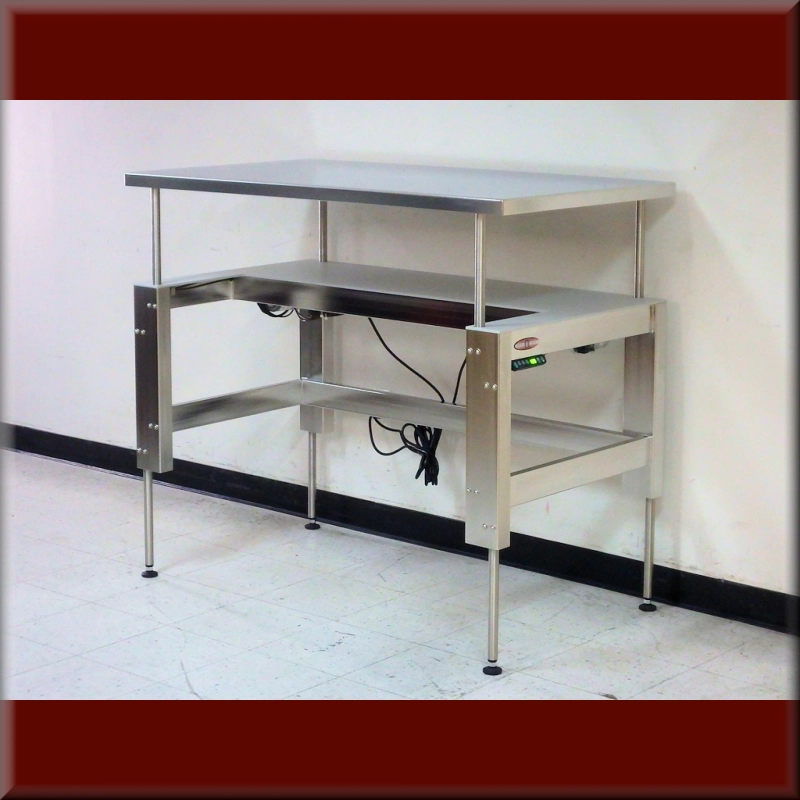Adjustable height tables are designed to allow workers to switch between sitting and standing positions at their workplace. Previously, workers were restricted to either sitting or standing throughout their workday, which often led to issues such as stiff necks and back pain. Adjustable height tables address these problems by offering a flexible solution.
As suggested by their name, the heights of these tables can be adjusted to suit the needs of the workers. Also known as height lift tables, they are now widely used across various industries.
The reasons for their popularity are discussed below.
These Tables Provide Much Needed Flexibility
Workers often need to switch between sitting and standing throughout the day. Standing for long periods can be exhausting, while sitting for extended periods can lead to stiffness and discomfort in areas like the shoulders and neck. Adjustable height tables offer a solution by allowing workers to easily change their position, promoting overall well-being and reducing discomfort. This flexibility ensures that employees can adjust the table height to their preferences, enhancing comfort and productivity.
They Offer Several Health Benefits
Remaining in the same position for too long can negatively impact a worker's health, potentially leading to back pain, headaches, stiffness, and wrist or neck injuries. Workers who do not change positions are at a higher risk of developing these issues.
When adjustable height tables are not used, particularly in a setting where they could be beneficial, several issues can arise:
● Increased Risk of Health Problems: Prolonged sitting at a fixed-height desk can contribute to a range of health issues, including back pain, poor posture, and repetitive strain injuries. Without the option to stand or change positions, these risks are exacerbated.
● Decreased Comfort: Fixed-height tables may not accommodate the varying ergonomic needs of different users. This can lead to discomfort and fatigue, as users may not be able to find a position that suits them best.
● Reduced Productivity: Sitting for extended periods can lead to decreased energy levels and focus. The lack of movement and the inability to switch positions might impact overall productivity and work performance.
● Limited Flexibility: Fixed tables don't offer the flexibility to adjust for different tasks or preferences. For example, tasks that require different heights for optimal comfort and efficiency may be harder to perform.
● Potential for Poor Posture: Without the ability to adjust the desk height, users might adopt poor posture habits to compensate, leading to long-term musculoskeletal issues.
● Inflexibility in Shared Workspaces: In environments where multiple people use the same desk, a fixed-height table might not suit everyone’s needs, leading to potential discomfort and reduced effectiveness.
● Lower Engagement with Movement: Without the option to stand, users may be less likely to incorporate movement into their workday, which can negatively impact overall health and energy levels.
Adjustable height tables help mitigate these risks by enabling workers to alternate their positions, thus improving overall health and reducing the likelihood of serious health problems.
They Help in Maintaining Alertness
Height lift tables also help workers maintain alertness and reduce fatigue. Staying in one position for extended periods can lead to drowsiness and decreased energy levels, which in turn affects alertness and job performance. By allowing workers to switch between sitting and standing, these tables help keep them engaged and focused, thereby enhancing work quality and reducing the likelihood of errors.
Conclusion
Adjustable height tables offer numerous benefits and should be implemented in workplaces to promote the overall well-being of employees. By providing flexibility, supporting health, and maintaining alertness, these tables contribute significantly to a more productive and comfortable work environment.



